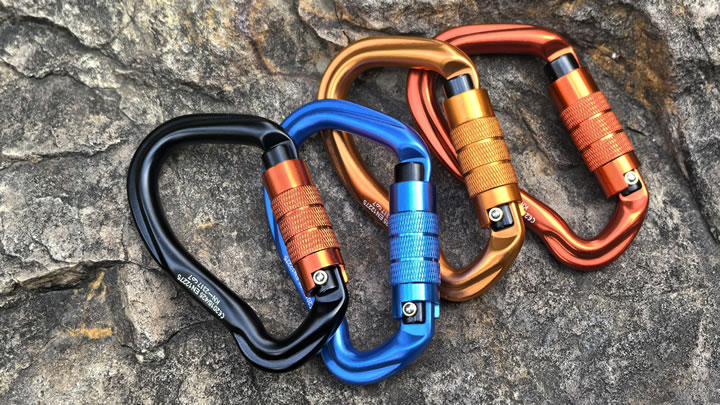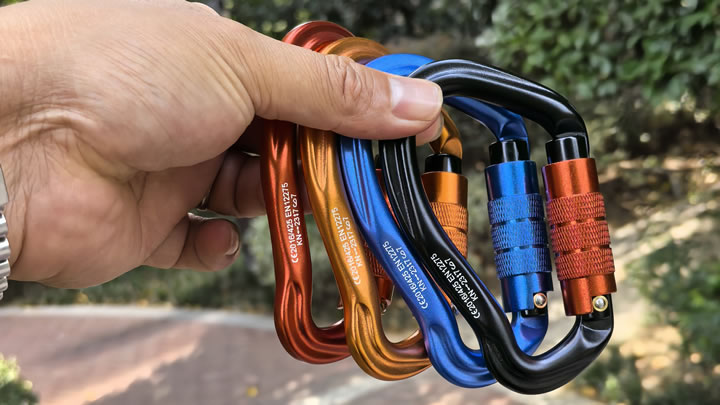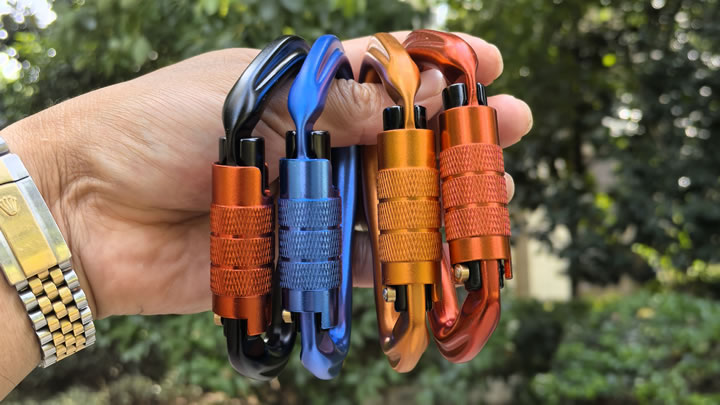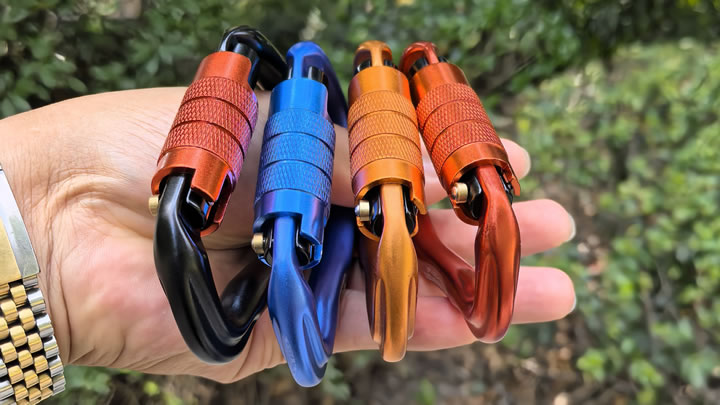DIY gear repair: fixing torn tents & broken zippers
When you're an avid hiker, camper, or outdoor enthusiast, your gear is your trusted companion. But nothing can dampen the spirits like a torn tent or a broken zipper during an adventure. Instead of rushing to buy new gear or spending a fortune on professional repairs, learning some DIY repair skills can be a game - changer. In this comprehensive guide, we'll explore how to fix torn tents and broken zippers, ensuring your gear stays in top shape for your next outdoor escapade.

Fixing Torn Tents
Assessing the Damage
The first step in repairing a torn tent is to assess the extent of the damage. A small puncture or a minor tear is a relatively easy fix, while a large rip or a damaged seam may require a bit more effort. Check the fabric type of your tent as well. Most tents are made of nylon, polyester, or a blend, and different fabrics may need slightly different repair approaches.
Tools and Materials Needed
- Patch Material: For nylon and polyester tents, you can use a piece of the same fabric (saved from an old tent or purchased from an outdoor store). If unavailable, a waterproof, durable material like ripstop nylon can be a great substitute. For tents with a polyurethane (PU) coating, ensure the patch material also has a similar coating or use a specialized tent patch kit that comes with the right adhesive and patch fabric.
- Adhesive: A high - quality, waterproof tent repair adhesive is essential. There are specific adhesives designed for outdoor gear that bond well to tent fabrics and provide long - lasting waterproofing. Some popular options include seam sealers that can also be used for patching.
- Scissors: A sharp pair of scissors is needed to cut the patch material to the appropriate size and shape.
- Ruler or Measuring Tape: Helps in accurately measuring the size of the tear and the patch.
- Clean Cloth: To clean the area around the tear before applying the patch.
Repairing Small Punctures and Minor Tears
- Clean the Area: Use a clean cloth to gently wipe away any dirt, debris, or moisture from the area around the tear. This ensures that the adhesive will bond properly.
- Cut the Patch: Measure the size of the tear and cut a patch that is at least 1 - 2 inches larger than the damaged area on all sides. If the tear is circular, cut a circular patch. For irregular - shaped tears, cut a patch with rounded corners to prevent fraying.
- Apply Adhesive: Apply a thin, even layer of the waterproof adhesive to the back of the patch. Be careful not to apply too much, as it can seep through the fabric and create a mess.
- Attach the Patch: Carefully place the patch over the tear, aligning it as accurately as possible. Press down firmly, starting from the center and working your way outwards to remove any air bubbles. Use a smooth object, like a credit card, to apply even pressure and ensure a good bond.
- Let it Dry: Allow the adhesive to dry completely according to the manufacturer's instructions. This may take several hours, so be patient. Avoid using the tent until the patch is fully dry and the adhesive has set.
Repairing Larger Rips and Damaged Seams
- Prepare the Tear: If the rip is large, you may need to sew the edges together first to reduce the size of the opening. Use a heavy - duty thread that is suitable for outdoor fabrics and a large - eyed needle. Sew a running stitch along the edges of the rip, making sure the stitches are close together to hold the fabric in place.
- Reinforce with a Patch: After sewing the rip, apply a patch over the repaired area as described above for small tears. However, for larger rips, you may want to use a larger patch or even consider using two patches - one on the inside and one on the outside of the tent for added strength.
- Seam Repair: If the seam is damaged, first check if the stitching has come undone or if the fabric itself is torn at the seam. If the stitching is loose, re - sew the seam using a backstitch or a zigzag stitch for added strength. Then, apply seam sealer along the entire length of the repaired seam to ensure waterproofing. Seam sealers are thick, viscous substances that fill in the gaps between the stitches and create a waterproof barrier.
Fixing Broken Zippers
Common Zipper Problems and Their Causes
- Zipper Won't Slide Smoothly: This can be due to dirt, debris, or rust in the zipper teeth. Over time, sand, mud, or even lint can get trapped between the teeth, making it difficult for the slider to move.
- Zipper Teeth Won't Mate Properly: The slider may be damaged or misaligned, or the teeth may be bent or missing. This can happen if the zipper has been pulled too hard or caught on something.
- Zipper Pull is Broken: The pull tab can break off due to wear and tear or if excessive force is applied.
Tools and Materials for Zipper Repair
- Pliers: A pair of needle - nose pliers or small, sharp - pointed pliers is useful for bending teeth back into place, adjusting the slider, and removing and installing zipper components.
- Lubricant: A silicone - based lubricant or wax can be used to make the zipper slide more smoothly. Avoid using oil - based lubricants as they can attract dirt.
- Replacement Slider or Pull Tab: If the slider or pull tab is severely damaged, you may need to replace them. Make sure to get a replacement that is the same size and type as the original.
- Thread and Needle: For some repairs, such as attaching a new pull tab or fixing a loose zipper stop, you may need a needle and thread.
Repairing a Sticky Zipper
- Clean the Zipper: Use a small brush, like an old toothbrush, to gently remove any dirt, debris, or rust from the zipper teeth. You can also use a damp cloth to wipe away stubborn grime.
- Lubricate the Zipper: Apply a small amount of silicone lubricant or wax to the zipper teeth. Run the slider back and forth several times to distribute the lubricant evenly. This should make the zipper slide more smoothly.
Fixing Zipper Teeth Issues
- Bent Teeth: If the zipper teeth are bent, use a pair of pliers to carefully straighten them. Hold the pliers firmly and gently bend the tooth back into its original shape. Be careful not to break the tooth.
- Missing Teeth: If a tooth is missing, you can try to find a replacement tooth from an old zipper. Use pliers to remove a tooth from the old zipper and then carefully attach it to the damaged zipper using a small amount of super glue. However, this is a more advanced repair and may not be possible for all types of zippers.
- Misaligned Teeth: If the teeth are not mating properly, the slider may be misaligned. First, remove the slider by carefully opening the stop at the bottom of the zipper (if possible). Then, realign the teeth by hand, making sure they are evenly spaced. Re - insert the slider and test the zipper. If the slider is damaged, you may need to replace it. To replace the slider, remove the old one by opening the stops at both ends of the zipper. Insert the new slider, making sure the teeth are properly engaged in the slider's tracks, and then re - attach the stops.
Replacing a Broken Zipper Pull Tab
- Remove the Old Pull Tab: If the pull tab is broken but still attached, use pliers to carefully remove it. If it has completely come off, look for a small hole or loop on the slider where the pull tab was attached.
- Attach the New Pull Tab: Thread the new pull tab through the hole or loop on the slider. If the pull tab has a split ring, open the ring using pliers, thread it through the slider and the pull tab, and then close the ring. If the pull tab is attached with a screw or a rivet, use the appropriate tool to attach it securely.
- By learning these DIY repair techniques for torn tents and broken zippers, you can save money, extend the lifespan of your gear, and be better prepared for any outdoor mishaps. Remember, practice makes perfect, so don't be afraid to try these repairs on old or less - used gear first to build your confidence. With a little patience and the right tools, you'll be able to keep your outdoor gear in excellent condition for all your future adventures.
- Do you have any personal experiences with tent or zipper repairs? If so, I'd be interested to hear about the challenges you faced and how you overcame them. This could help other outdoor enthusiasts learn from your wisdom.






